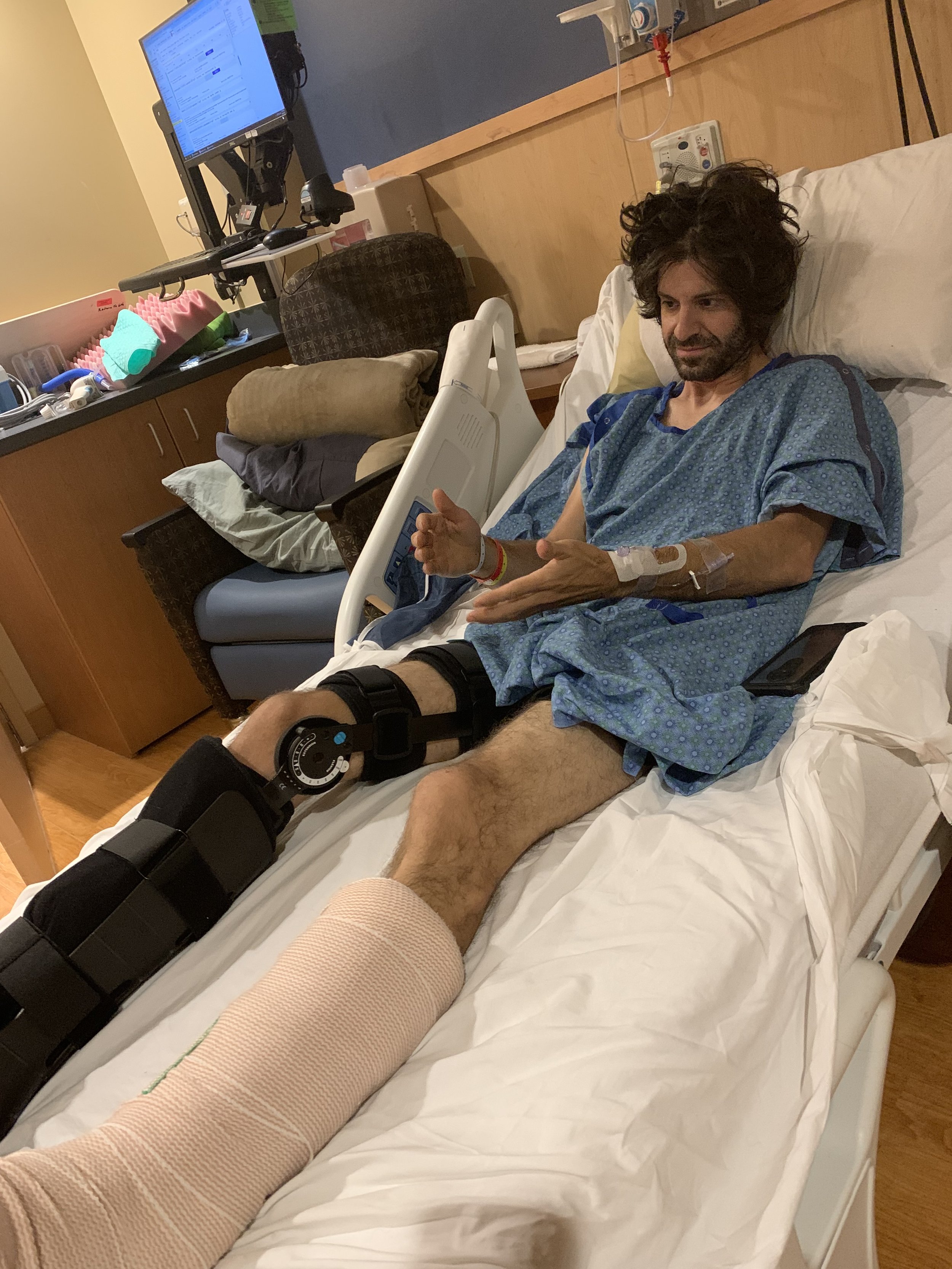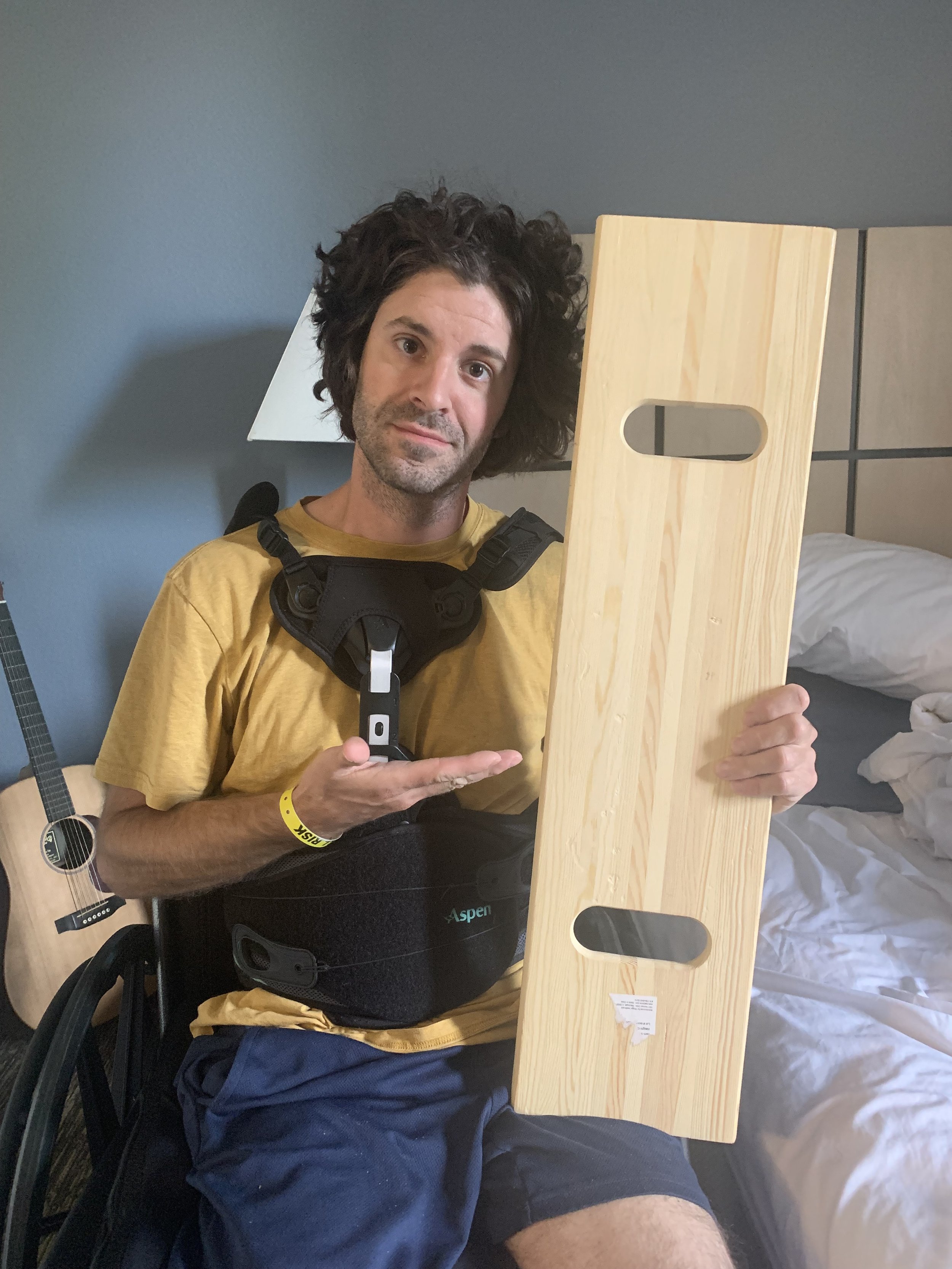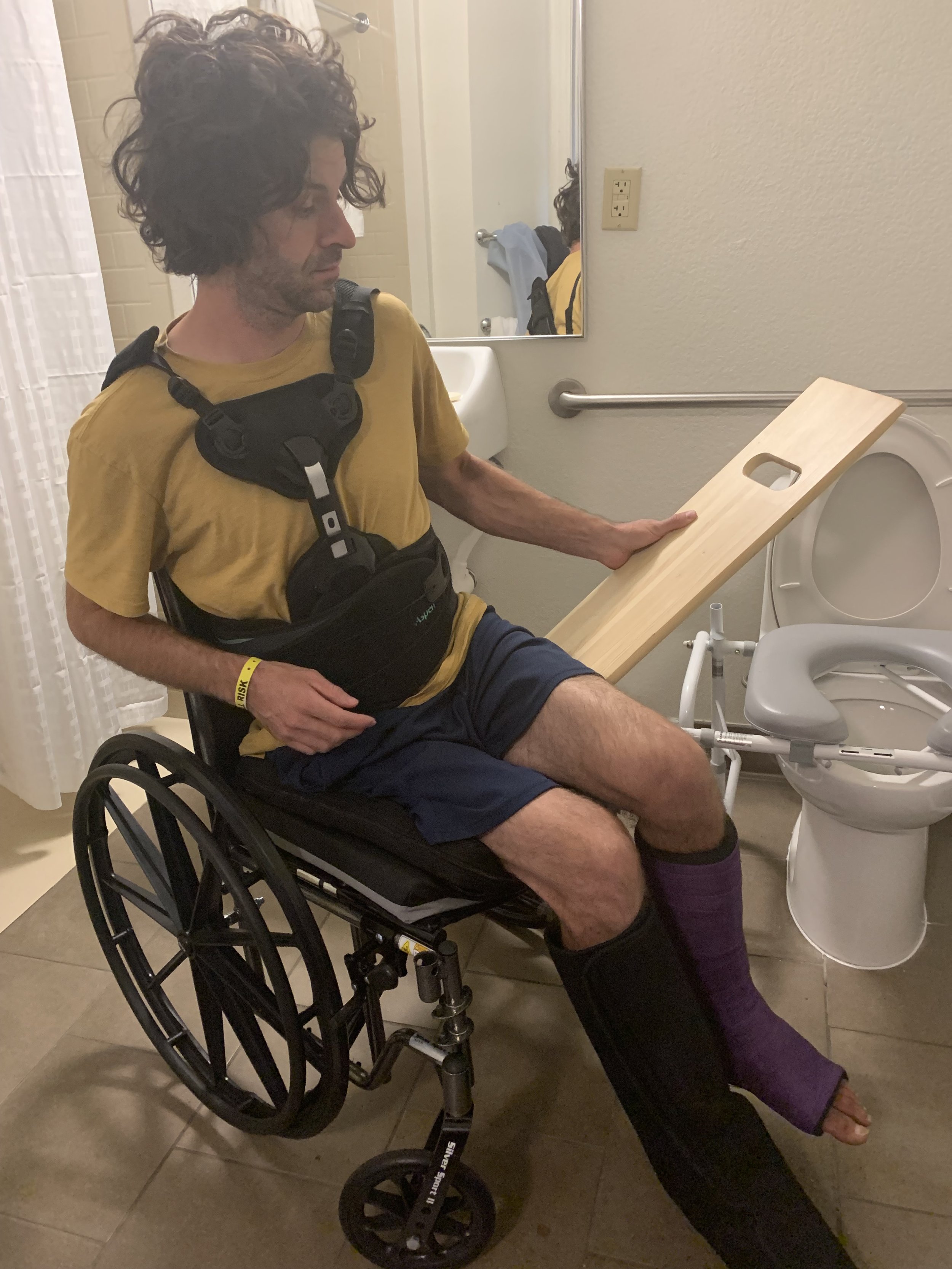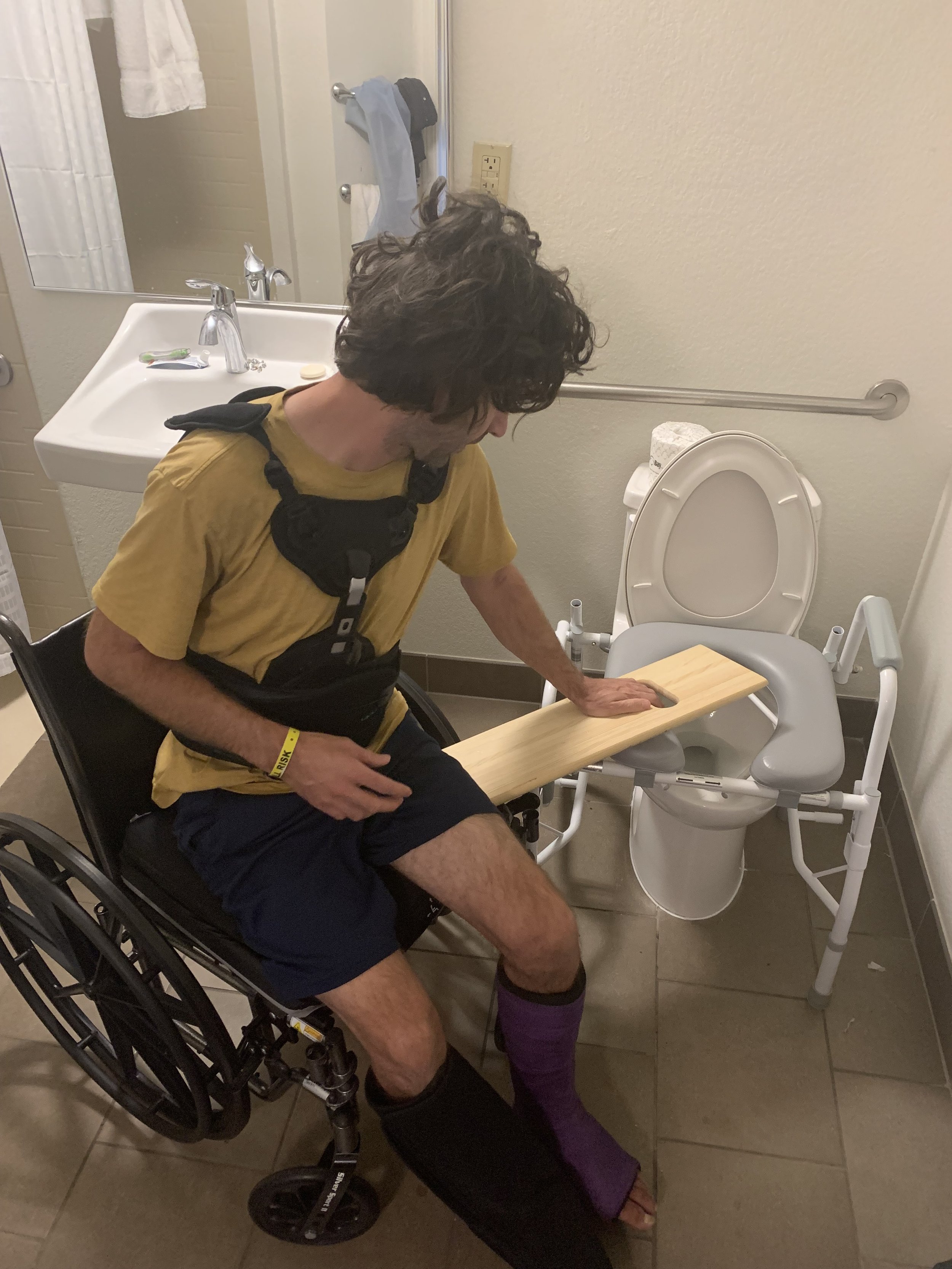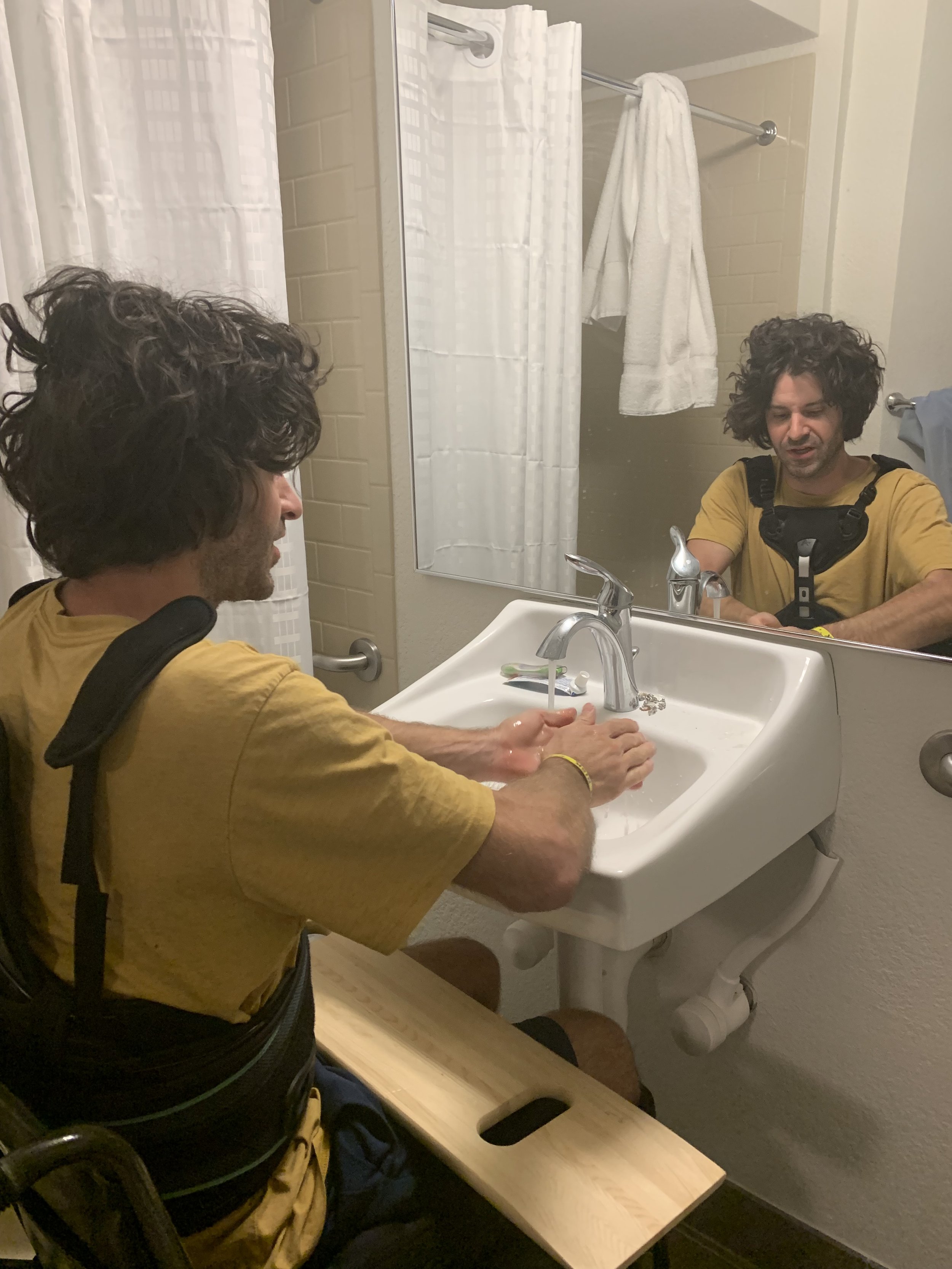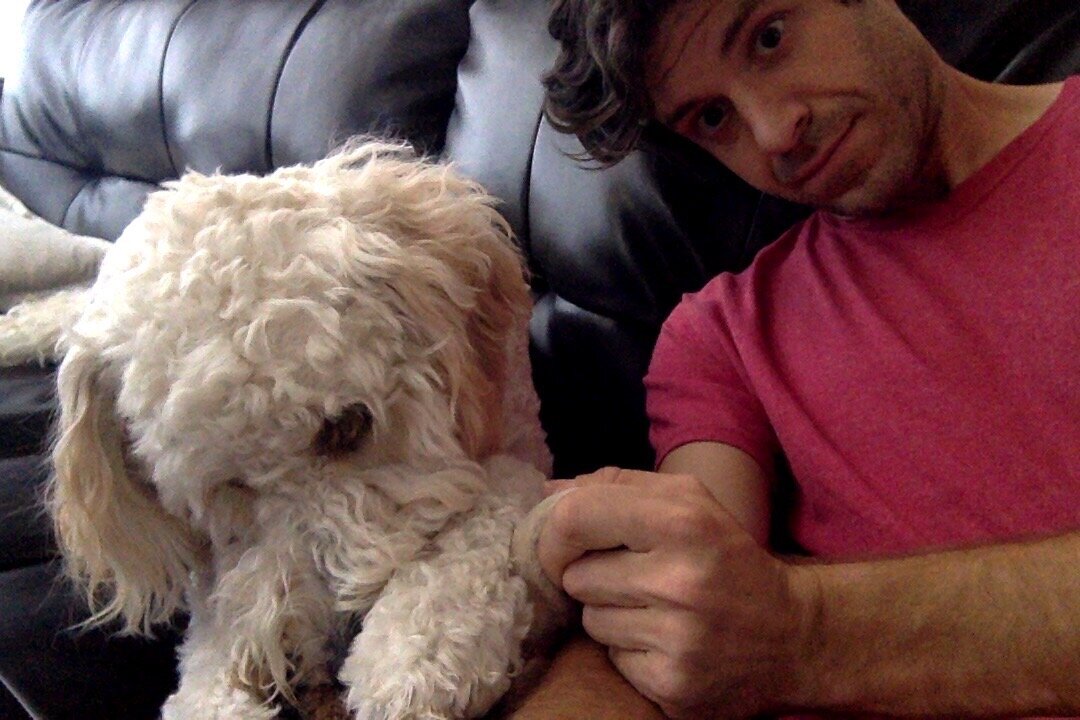I’m trying to do several things by writing this blog each week. First, I’m keeping myself busy and focused while I heal. It’s been really helpful as a gauge for the passing of time, as the drugs (and the unprecedented amount of indoor sloth I’ve engaged in) blur the days and weeks.
I also feel like it will be nice to have this as a record of some of my experiences. Whenever I feel frustrated, it’s good to go back to a previous essay to remind myself of just how far I’ve come.
Finally, I hope that I’m making myself useful. Maybe there will be some words and thoughts here that could help someone in a similar situation. And based on the conversations I’ve had, there is some curiosity in the world about the experience of having an accident and trying to recover. While I like to keep things positive, I’m trying to be as transparent and honest as possible.
With my Medical Problems essays, I’m trying to capture my experiences within the health care system. And while I could talk for hours about the topic, I’ll try to cover a few main points with two stories.
Story 2: Getting On My Nerves
As I pointed out in my week 1 essay, pain is constantly being tracked when you’re in a trauma center. In my first 10 days in the hospital, every day, multiple times per day, I complained of a dull ache in the back of my right leg. The pain went from the back of my knee all the way up to the upper part of my right glute. I consistently put the pain in the 3 to 5 range, which was a high number for me, considering that I reported a 6 when I was being carted down a hill to a helicopter.
I assumed the pain was a tight or pulled muscle, so I got a heating pad to try to loosen things up. Two days later, had a serious looking and itchy rash on the back of my right leg all the way up my butt, I can only assume from sitting in my own sweat all day. After a few days of sponge baths and quitting the heating pad, the rash subsided. But the pain in my leg never went away.
About 10 days into my luxury hospital vacation, a doctor came in to discuss what medications I could eliminate from my daily potpourri. He asked if I had any nerve pain. “I’m not sure, but I have had this persistent dull pain in the back of my leg,” I said. My doctor immediately decided to take me off of the gabapentin, a nerve pain drug I’d been taking since the accident.
The next morning, I woke up at 3am with a pulsing hot sharp pain in the back of my right leg. I had never had nerve pain before, but I knew this was it. Imagine the skin and muscle of your leg held open like a high school fetal pig dissection. Now, imagine heating a knife and lightly touching it deep inside your leg. Move it up and down, vary the pressure, and sometimes give it a little flick. That’s my best description of what I felt.
I called the night nurse in to explain that the doctor had taken my nerve drug, gabapentin, off of my schedule, and I was definitely having nerve pain now. Despite my distaste for dependence on drugs for relieving pain (evidenced by the fact that I’d declined to take oxy after just a few days in the hospital), I knew that the long-term negative impacts of gabapentin were minor compared with opioids. Also, this pain was on different level. While I’m usually good at pushing pain out of my mind, I found it nearly impossible to do with nerve pain.
So I asked for more gabapentin.
The nurse explained that it’s not a drug that they can dispense without my doctor’s approval, so I should wait until the doctor comes by in the morning to get it back on my schedule. I waited until the morning shift change, and told my day nurse the same story around 7am. She had the same answer for me. “Your doctor will be in soon. In the meantime, I can give you oxy every 4 hours as needed.” I still declined the oxy, determined to not touch the stuff unless it was totally necessary.
With each passing hour, the gabapentin, which I now knew had been masking my nerve pain (making it feel like a dull muscle ache since the day of the accident) was leaving my system. My pain was increasing, getting sharper by the hour, and I was starting to feel desperate. My weekend doctor rolled in at about 10 that morning, and I told her the story. She agreed to put me back on the drug. “But gabapentin is a drug,” she told me, looking toward the sky and gesturing her outstretched fingers in a circular motion, “that should be taken 3 times per day. So we want to put you on a 9am, 3pm, 9pm schedule.” Since 9am had passed, my next dose would be 3pm.
By now, I was a wily hospital veteran, who knew that you can request drugs an hour before schedule. So, while my pain level was around a 7 and rising, I knew I could make it to 2pm.
Jackie did her best to keep me distracted with conversation and crosswords, but the hours passed slowly. The pain became more pulsing, and the electric jolts were more frequent. I called in the nurse at 2:01pm, happy to have some relief on the way. But the nurse looked at my drug schedule and explained that gabapentin still wasn’t there. The doctor hadn’t put it in the system.
A long half hour later, the nurse came back and explained, “The doctor didn’t forget. She just hasn’t put it in yet.” Increasingly frustrated, I fought the urge to explain the definition of the word “forget”, and how it seems to apply pretty well here. It had been four pain-filled hours since the doctor visited. If a five minute task wasn’t completed, then you forgot.
3pm passed. My pain reached its highest levels since the second I crashed into the ground 10 days prior. 4pm passed. Still no nerve pain medication.
At 4:30, I couldn’t handle it anymore. I called the nurse, and said, “give me gabapentin, or give me oxy.” She came into my room with gabapentin.
As I desperately gobbled the drug, knowing it would be a while before it provided any relief, the nurse explained to me that next time I should let them know in advance if I’m feeling pain. I bit my tongue, resisting the urge to scream, “I asked for this 13 hours ago!”
Early the next morning, without much gabapentin built up in my system, the pain woke me up again. Frustrated, I asked for the only pain relief option available to me: oxy.
There are a hundred things wrong with this story.
While I understand doctors’ decisions to remove drugs aren’t always perfect, my dosage of gabapentin shouldn’t have been dropped so rapidly. (As I learned just a few weeks ago, withdrawal is possible.) And after this story, my dosage needed to be increased quite a bit to provide the previous level of pain relief.
And why wasn’t there more communication between nurses and doctors about my pain? Couldn’t they just send a text and get approval to put me back on meds I’d been receiving for the previous 10 days? They had all of my pain numbers in the system, could see the consistency in my leg pain, and could see that my pain number was higher than normal. What is this number being collected for if not for this very situation?
Perhaps a more maddening issue is that throughout the entire 13 hour ordeal, I was never given an option other than oxy and Tylenol for pain relief. But I’m pretty sure a bit of massage could have helped. Maybe some stretching? Meditation? A bath? Some smooth jazz music to provide emotional therapy? There must have been someone in the hospital who knew something about sciatic nerve pain who could have given me some suggestions.
During those hours, I spent a lot of time Googling options and trying things out. But why, while sitting in a hospital bed that cost $12,000 a day, did I have to rely on Google for any amount of medical information?
Finally, I think this story gives a bit of insight into the “opioid crisis”. Without any other pain relief options available, what is a patient expected to do when they are hurting? As well-intended and hard-working as nurses are, their superiors on some level, don’t trust them enough to dispense reasonable care. Even those who were quick to discuss the downsides of opioids when prompted, had been quietly dispensing oxy to me for days. The system doesn’t give them a lot of options.
Rhyming Moral: If your aim is care and to get well, it’s better to get a nice hotel.
Non-rhyming Moral: Capitalistic or not, bureaucracy is problematic.
Injury Updates:
It turns out that increasing my number of steps per day while simultaneously doing physical therapy on both feet, my pelvis, my knees, and my elbows, all while trying to make strength gains in climbing… is hard. I hit physical and emotional walls sometimes. But every week has been better than the week before.
I’m walking and climbing better, but not pain-free. I probably look pretty normal on many days, but true normalcy is still a ways off. All I can do is try my best and hope that my new normal isn’t far off from my old normal.
















